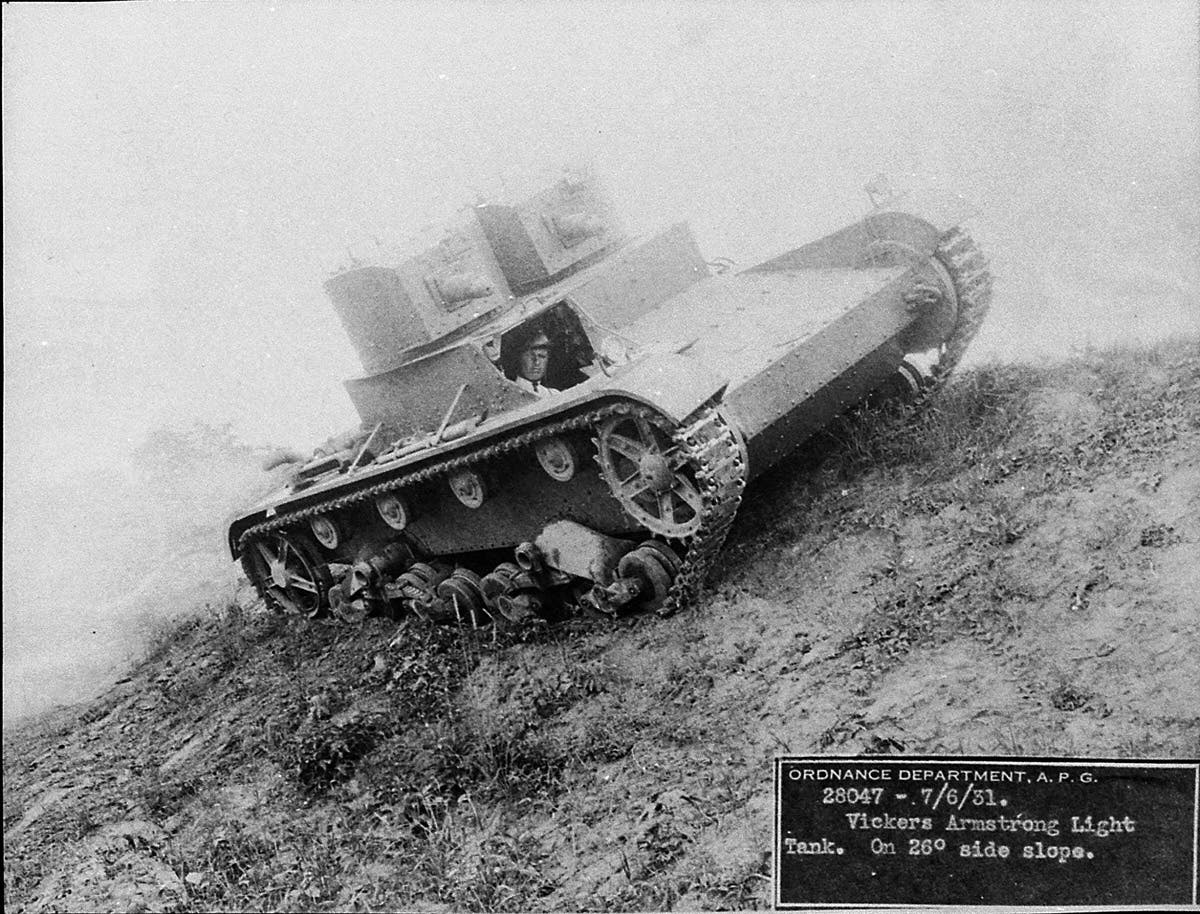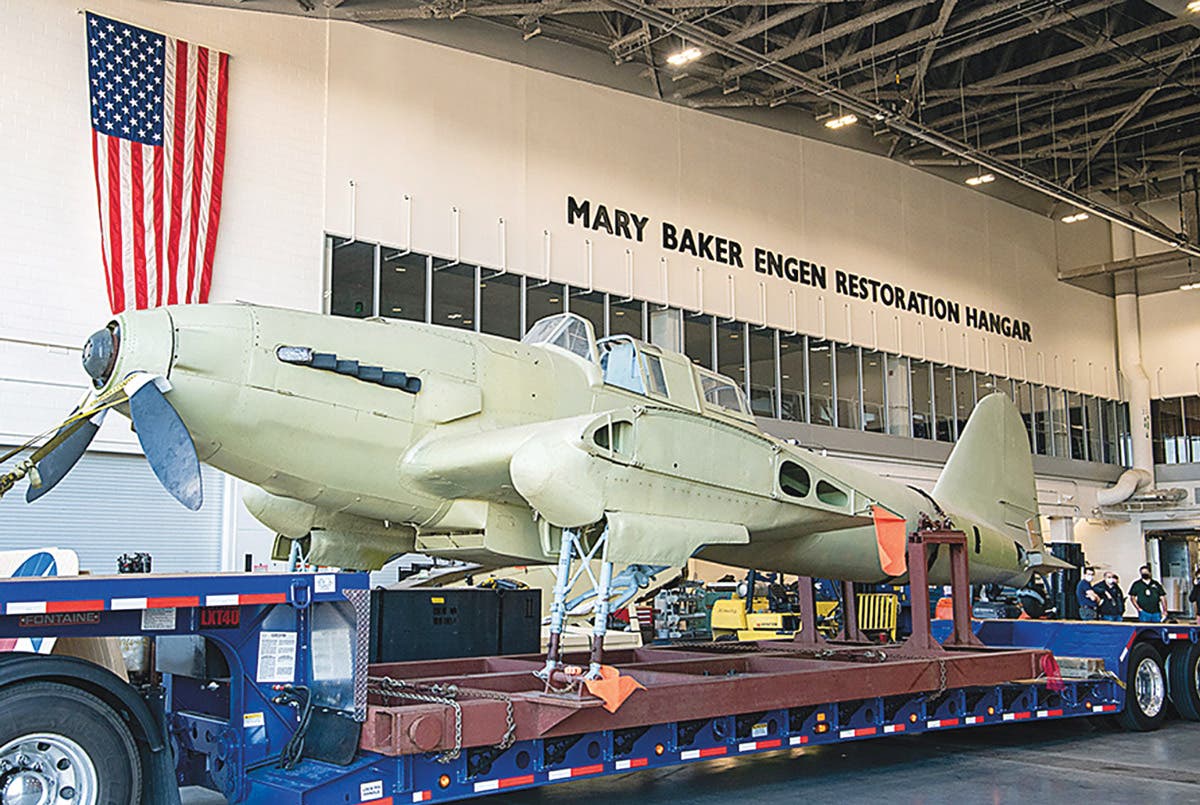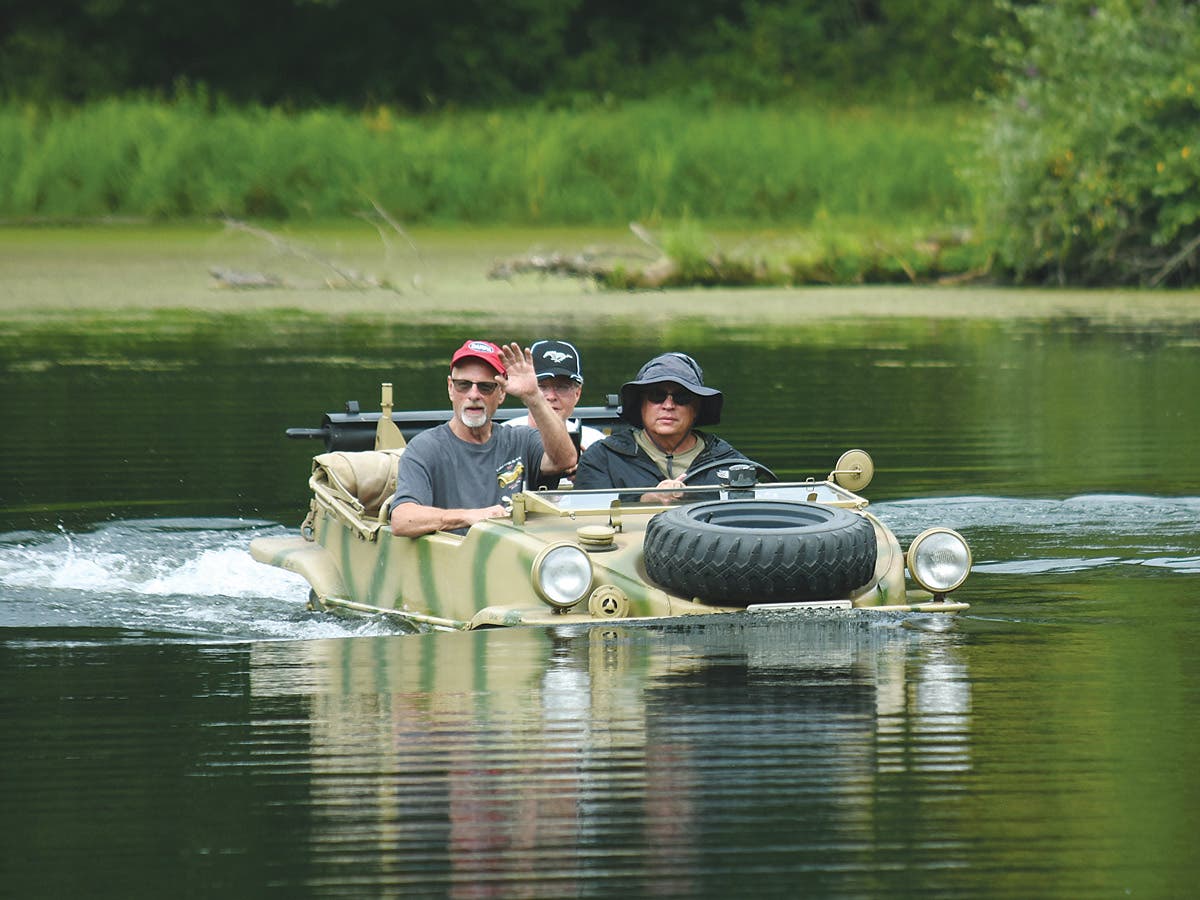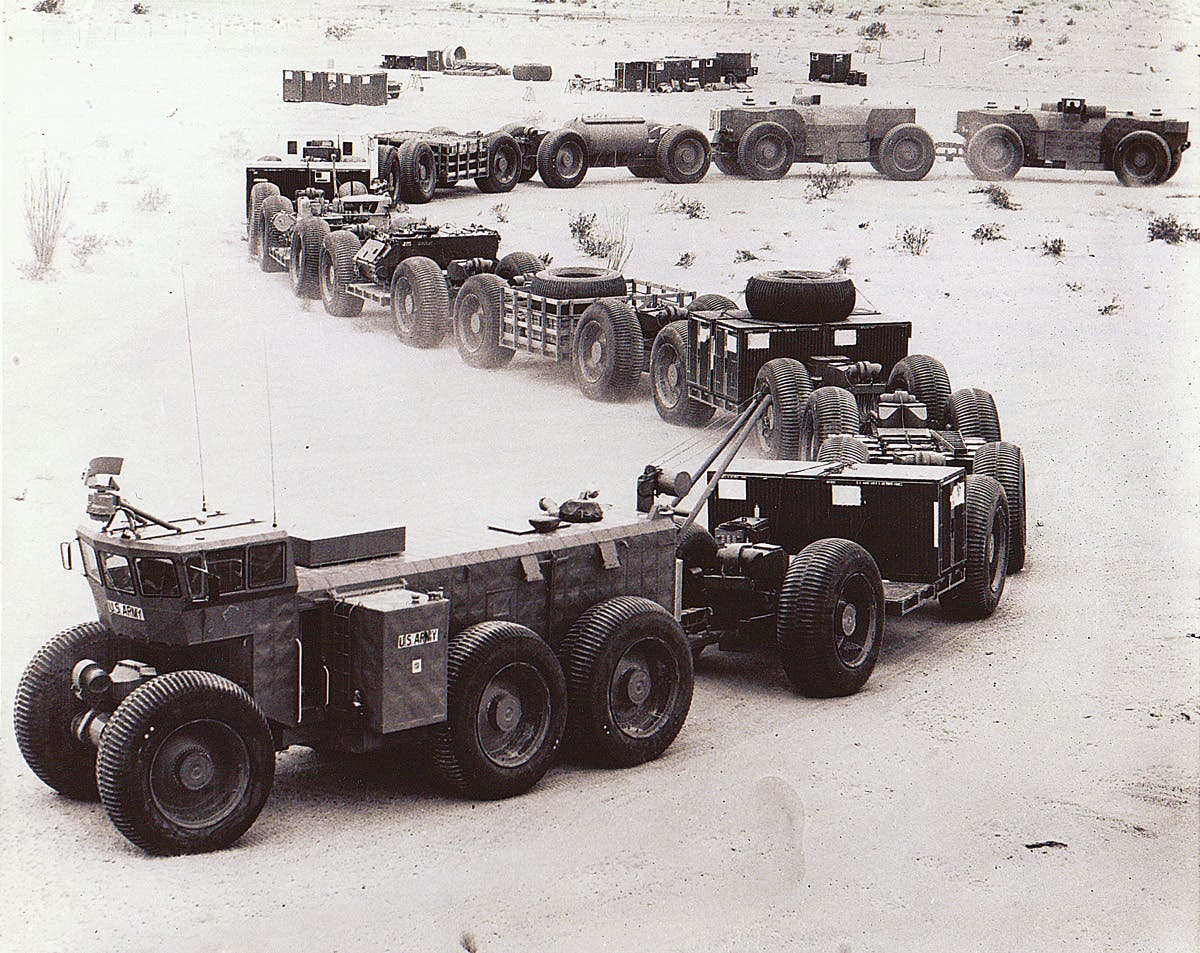Building a Trailer to Haul Your M274 Mule
Follow these steps to convert an M116A2 trailer into something to haul your Mule or a smaller military vehicle
A mishap in loading my M274 Mule into the bed of my pickup truck prompted me to find another way to transport vehicles while using my pickup truck. At the Red Ball Rally in Gilbert, Pa.,I found a trailer that looked like it would be suitable.
Sure, one could buy a commercial trailer, but I prefer to transport the Mule on a military trailer. Anyone who has tried to stand on the fender of a commercial trailer will appreciate the fact that the military trailer I found had a flat deck.
The M116A2 trailer was in good shape and had a surge brake, eliminating the electric brake setup I would need to install for a commercial trailer. The M116A2 trailer came without the generators, but did have the bows and, of course, all of the holes in the bed left over from all the bolted-down equipment that was removed prior to my acquisition. The trailer also had a government modification placard stating it was upgraded to a carrying capacity of 3,000 lbs. GVW.
After a few measurements, it became apparent a few modifications were required to adapt the trailer to haul the Mule. I would be able to use the same ramps on the trailer that I employed to load the Mule in the bed of the pickup.
For those who are wondering, a Mule requires a minimum of 49” of clear space between the wheel wells in order to fit on a trailer. The wheel wells of the M116A2 trailer had be cut back and new steel welded in place. In addition, I had to replace the tail light lamps with 12-volt lamps and install a military trailer receptacle on the truck. Here’s how I did it:
Tools required:
*MIG or stick welder (or a willing friend with one) along with a welder’s helmet and gloves
*Sawzall, cutting torch or a plasma cutter
*12 or so heavy metal cutting sawzall blades
*4” or larger angle grinder with grinding, cutting and wire wheels
*3/4” and 1-1/8” hole saw
*couple of sharpie markers or soapstone for layout
*Framing square
*Vice grip or C-style clamps
*Ear plugs or muffs and safety glasses
*Set of jack stands
Step 1. Stripping the trailer down
Locate the trailer in a convenient place to access both power tools and the welder. Since the wheel wells will need to be cut back, begin by measuring the existing distance between the inside of the fenders to determine the amount of metal required to be removed.
You will need to also measure the distance on the inside of the wheel well to the inside edge of the tire to determine just how much the fender can be trimmed.
Using a marker, lay out the areas to be removed on both fenders. I chose to taper the cut on the front and rear side of the fender. Should you choose not to taper the fenders, it is possible to salvage the cut-off metal and reuse the scrap pieces, thereby avoiding the costs of metal shop fabrication.
Jack-up the trailer and remove the tires before beginning to cut the fenders to avoid damaging them Take your time when cutting the fender to ensure the cuts follow the lines closely. You will eliminate extra grinding time to clean up crooked cuts.
When cutting the fender along the bed, it is difficult to cut close, as you are working with an inside corner with the square edge of the sawzall foot. Therefore,additional grinding may be necessary to remove excess metal. Once both cuts are made, take the removed pieces to a metal fabricator to use as a pattern to fabricate the wheel well enclosures. Should you select the squared-off wheel well, cut, fit and weld the leftover metal to form an enclosure for the wheel well.
Step 2. Cutting the holes
Since my trailer spent its life with generators and related equipment mounted to the deck, there were many holes that needed to be closed. In addition, the rear support leg had to be straightened. I used a come-along with two slings attached to the bracket with the pin installed. The come-along was anchored to the lunette with another short sling to pull the frame into its original position.
Using a right-angle grinder fitted with a wire wheel, clean up the areas around each hole, removing paint and rust as needed to weld the holes closed. Grind excess weld material smooth with the surface of the deck.
The large hole near the center of my trailer’s deck required additional work. Using the framing square, I laid out a square and marked its outline for cutting. Using the angle grinder fitted with a thin cutting wheel, I followed the pattern. Using some of the leftover fender metal, I prepared a patch slightly smaller than the hole and welded it in place. Again, the grinder removed excess weld material to clean up the patch.
Step 3. Setting up the trailer hitch
If you plan to pull the trailer behind a military vehicle there are no modifications required other than to check the taillights for operation. Since I am planning to tow this trailer behind a civilian pickup truck with a 12-volt electrical system, I had some more work to do. I elected to retain the military wiring in place, including the trailer plug. This will allow any military vehicle to also tow this trailer by simply swapping out taillight bulbs. The truck however, will require a little preparation.
I already had a receiver style hitch installed on my truck so half of the work required to tow this rig was complete.
Installing the military trailer receptacle on a civilian truck requires fabricating a plate to hold the receptacle and its weather-resistant snap cover. Use a properly sized hole saw to drill the bracket for the receptacle to fit. Using the receptacle as a guide, mark and drill the 1/4” mounting holes. Locate a suitable location on the truck for the receptacle and install it using self-tapping screws or bolts.
Using 1/4” hex head bolts, fasten the receptacle to the mounting plate. Since I did not wire the blackout lights for use with the pickup truck, I had to purchase four new lamps and install them in the light assemblies.
Since my truck was pre-wired for a trailer, I purchased the corresponding plug and spliced it to the military trailer receptacle leads. When the lights were tested and found to be in working order, the connection to the truck was simple.
Plug the trailer into the newly installed receptacle and connect its function to correspond with the truck. This trailer will spend most of its time when not in use in an area accessible to the public.
I chose to make a few other modifications. One such modification involves a simple lunette lock requiring two pieces of 4” square steel plates 1/4” thick and a 4-inch long piece of 1” round, cold rolled steel stock.
Stack the flat plates securely in a vice or to the table of a drill press and drill a 1/4” hole in the center of both plates. Using the 1/4” hole in the bottom plate as a guide, weld the round stock to the center of one the steel plates.
Drill a 1-1/8” hole in the other steel plate using the 1/4” pilot hole as a guide. Using a 5/16” drill bit locate and cross-bore a hole to accept a long 1/4” shackle padlock. Place the plates on the lunette to locate the 5/16” hole to accommodate your particular lock.
In addition to preventing someone from towing my trailer, I wanted to prevent access to the master cylinder of the surge brake. The master cylinder cap is located in plain view near the lunette. Two short pieces of 2-1/2” wide 1/4” thick flat bar and a 5” piece of 1” round, cold rolled steel stock and a 2” long piece of 1/4” round stock will be the material needed.
Stack both plates together in a vice or secured to the table of your drill press and using the 1-1/8” hole saw, drill a hole centered 1-3/4” from one end . Using an angle grinder, or stationary grinder, round off the square edges of the flat bar on ends near the hole.
Using the 1” round stock as a guide, position the flat bar on either side of the surge brake housing, secure them with a clamp and weld them in place. With a 1/4” drill bit, cross-bore a hole on one end of the stock to accept the cross pin. At the other end cross-bore a 5/16” hole to accept a long 1/4” shackle lock.
Step 4. Tie downs and details
Now the trailer was ready to haul the Mule!
Before I loaded the mule onto the trailer (that is not hitched to the truck), I ensured the rear stabilizing leg was down and in contact with the ground, the trailer brakes were set and the ramps were secured to the trailer by straps or drop pins.
The trailer has tie-downs already installed that may be used with ratchet straps to strap down the mule for transport. In an effort to build a better mousetrap, I elected to construct some bed-mounted tie-down slots in the bed.
I chose the slots over the military tie-downs used on the sidewalls of cargo trucks because mounting them in the bed of the trailer would invite standing water along with dirt and debris.
The slots are made with a 3/4” hole saw and an angle grinder with a cut-off wheel or sawzall. I chose to reinforce the slots with a 6” square 1/4” steel plate welded to the top surface of the bed.
Four tie-down points, one on each corner, would be sufficient to anchor the mule to the trailer. Stack the plates, aligning the edges and lay out the 7/8” holes at a distance to fit your straps.
If you choose to not reinforce the slots use a piece of scrap wood or metal as a template to lay out the holes in the bed. Once the holes are drilled, cut the remaining metal away to form the slot.
Lay out the slots in the bed to correspond to the plates and drill the holes and cut the remaining metal away to complete the slot in the deck.
Clean up the edges of the slots and the deck using a flap wheel mounted in the angle grinder prior to welding.
Place the reinforcing plates over the deck and weld them at the edges.
Step 5. Time to paint.
Prime and paint the exposed areas and welds with the color of your choice and enjoy your trailer!








